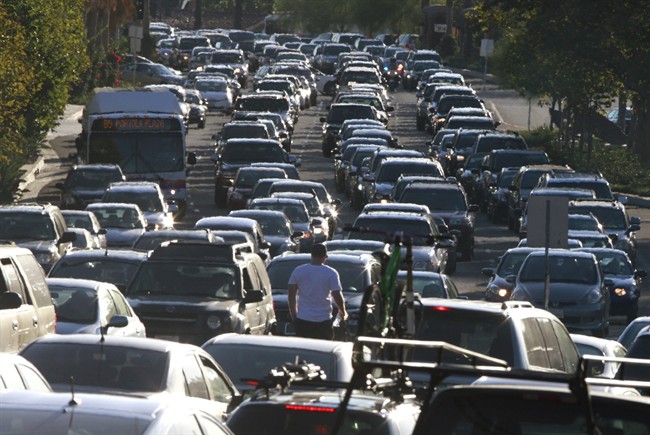SAN DIEGO – Power has been restored to millions of people in the U.S. Southwest and Mexico after a massive blackout, but questions linger over how such a huge outage could have been caused by a single utility worker doing a minor repair job.

Thursday’s blackout has puzzled authorities and experts and was a reminder that U.S. transmission lines remain vulnerable to cascading power failures.
There have been several similar failures in recent years. In 2003, a blackout knocked out power to 50 million people in the Midwest and the Northeast. And in 2005, a major outage struck the Los Angeles metropolitan area.
That same year, Congress required utilities to comply with federal reliability standards for the electricity grid, instead of self-regulation. Layers of safeguards and backups were intended to isolate problems and make sure the power keeps flowing.
But that didn’t happen on Thursday.
“There are a lot of critical pieces of equipment on the system and we have less defence than we think,” said Rich Sedano at the Regulatory Assistance Project, a utility industry think-tank based in Montpelier, Vermont.
The Arizona Public Service Co. worker was switching out a capacitor, which controls voltage levels, outside Yuma, Arizona, near the California border. Shortly after, a section of a major regional power line failed, eventually spreading trouble further down in California and later Mexico, officials said.

Get daily National news
And the lights began to go out in a border region of roughly 6 million people.
The outage knocked out traffic lights, causing gridlock on the roads in the San Diego area. Two reactors at a nuclear power plant up the California coast went offline after losing electricity. More than 2 million gallons of sewage spilled into the water off San Diego, closing beaches in the eighth-largest U.S. city.
The National University System Institute for Policy Research, estimates the outage cost the San Diego-area economy more than $100 million.
Many had to spend the night, on both sides of the U.S-Mexico border, struggling to fall asleep in high temperatures.
Federal and state investigators are trying to determine what caused the blackout and how future problems can be prevented. If regulatory violations are found, the government could issue fines of up to $1 million per day for every violation, officials said.
Among the questions they will be asking is why the safeguards to keep power flowing appeared to work, at least at first. There was a roughly 10-minute gap between the time the power line failed and customers lost electricity, said Daniel Froetscher, vice-president of energy delivery for Phoenix-based APS.
The line has been “solid, reliable” with no history of problems, Froetscher said.
San Diego Gas & Electric Co. should have isolated the problem by shutting down the 500-kilovolt Southwest Powerlink as it did during 2007 wildfires, said Michael Shames, executive director of the advocacy group, Utility Consumers’ Action Network.
“If a fire breaks out in the kitchen, the first thing you do is shut the door to the kitchen to stop it from spreading,” he said.
He also questioned why the San Onofre nuclear power plant was forced to shut down, and why other back-up energy didn’t kick in.
Michael Niggli, SDG&E’s president and chief operating officer, said the company had no time to shut down the line because it had no warning.
Niggli said automatic circuit-breakers at San Onofre prevented the blackout from spreading to Southern California Edison, which serves 14 million people in the Los Angeles area.
At a news conference Friday, Niggli compared the power grid to a quiet pond. “When somebody throws a rock in there, it causes ripples. Depending on how big that rock is, those ripples are going to affect everyone that’s in that pond,” he said.
Experts say the problem could have been made worse by the way power flows into California.
California imports huge amounts of power from Arizona and other states. When the voltage fluctuations caused the San Onofre nuclear station to shut down to protect itself, it deprived the grid of a huge source of California-generated power.
Normally, a loss of that power would result in more flowing from Arizona.
But that power was already off line, depriving the region of power.
___
AP Energy Writer Jonathan Fahey contributed to this report.







Comments